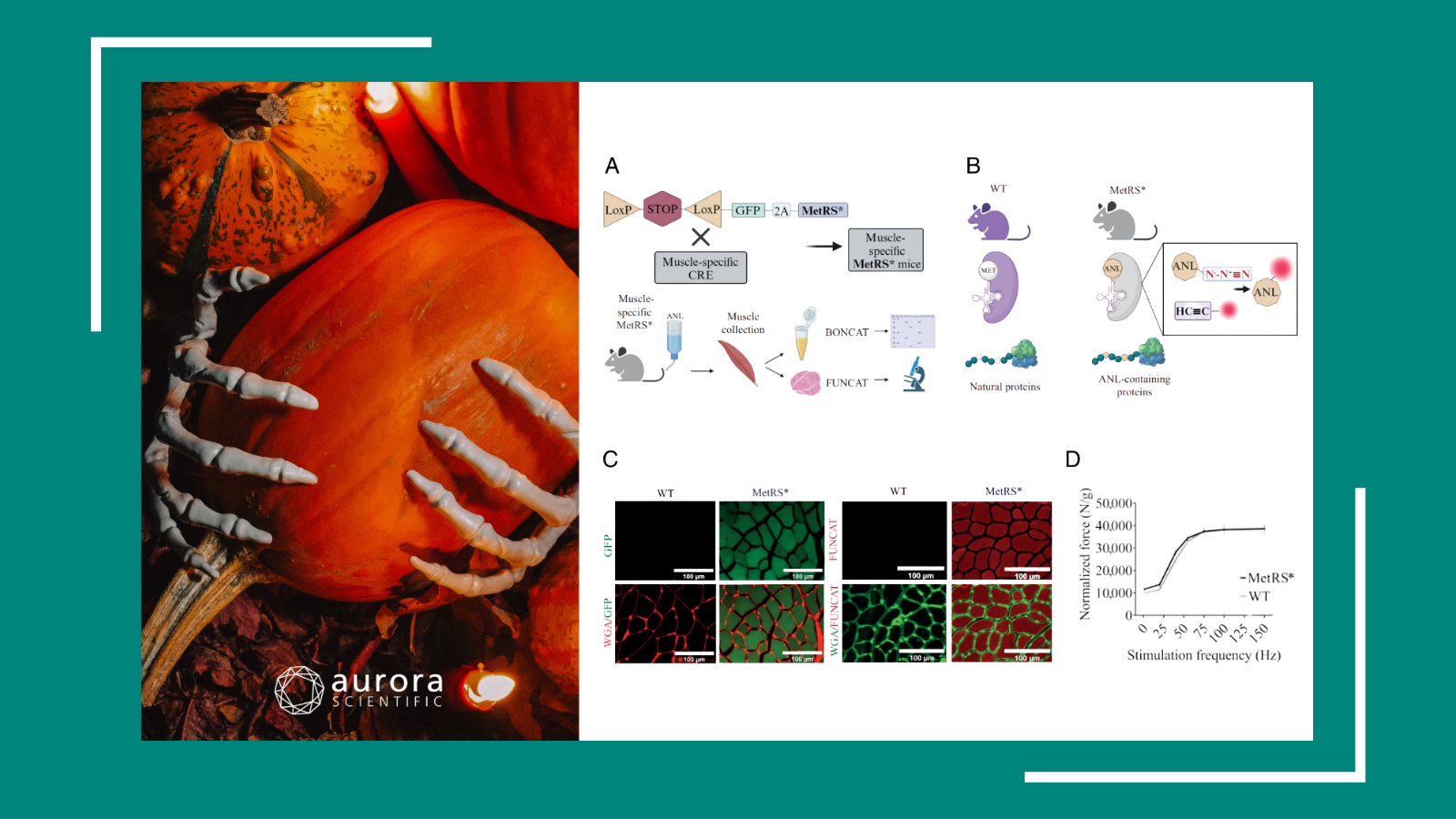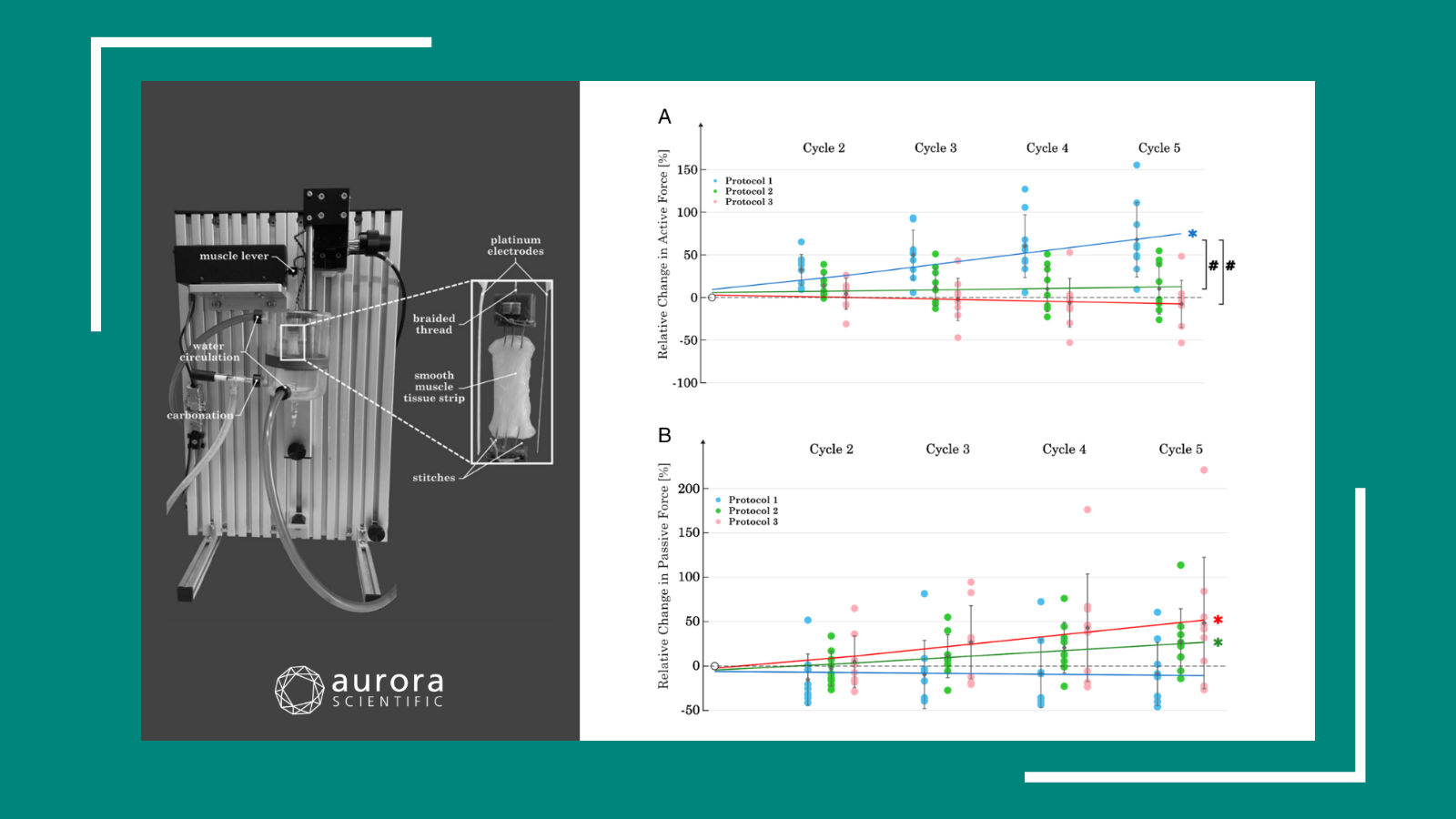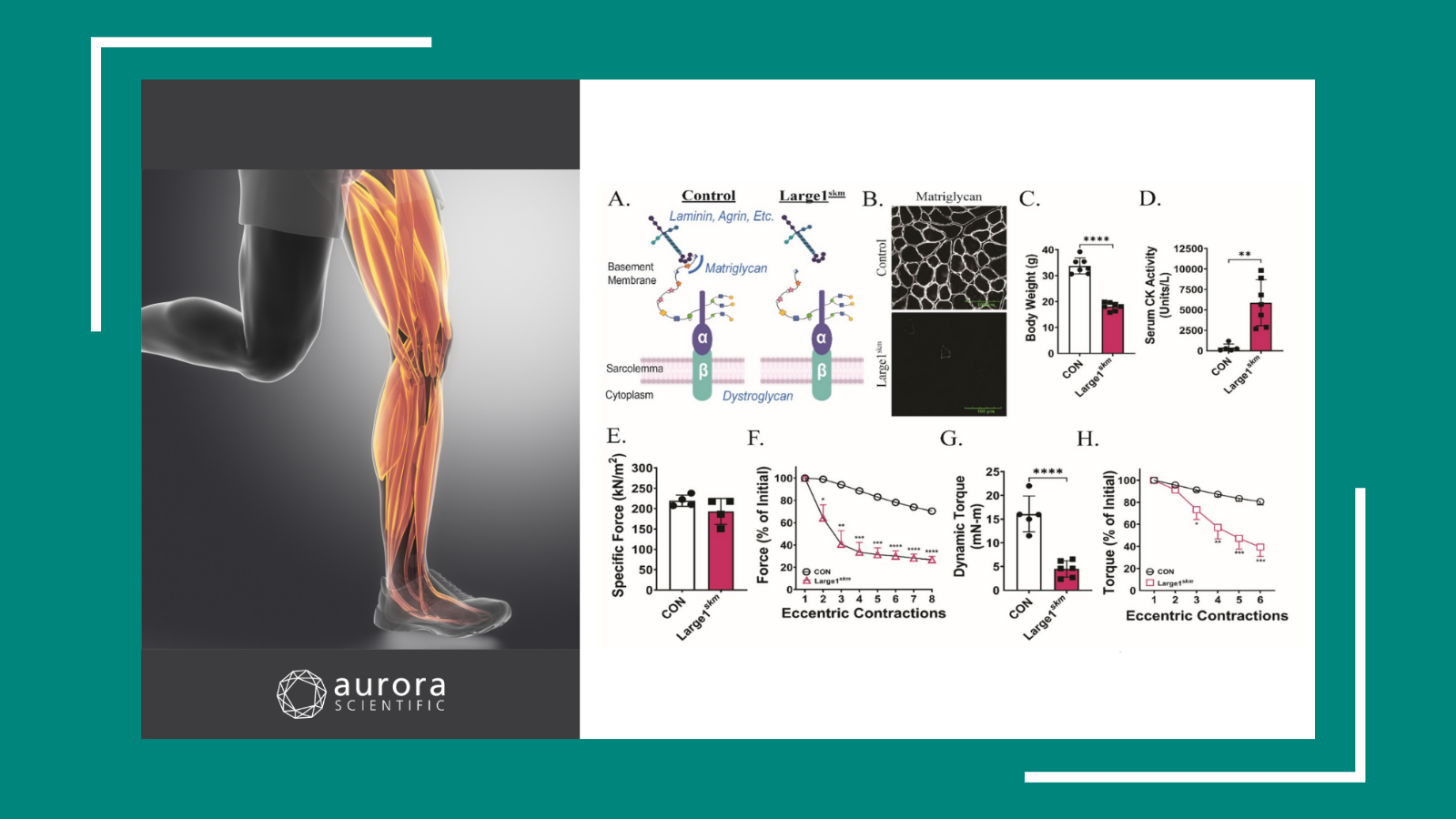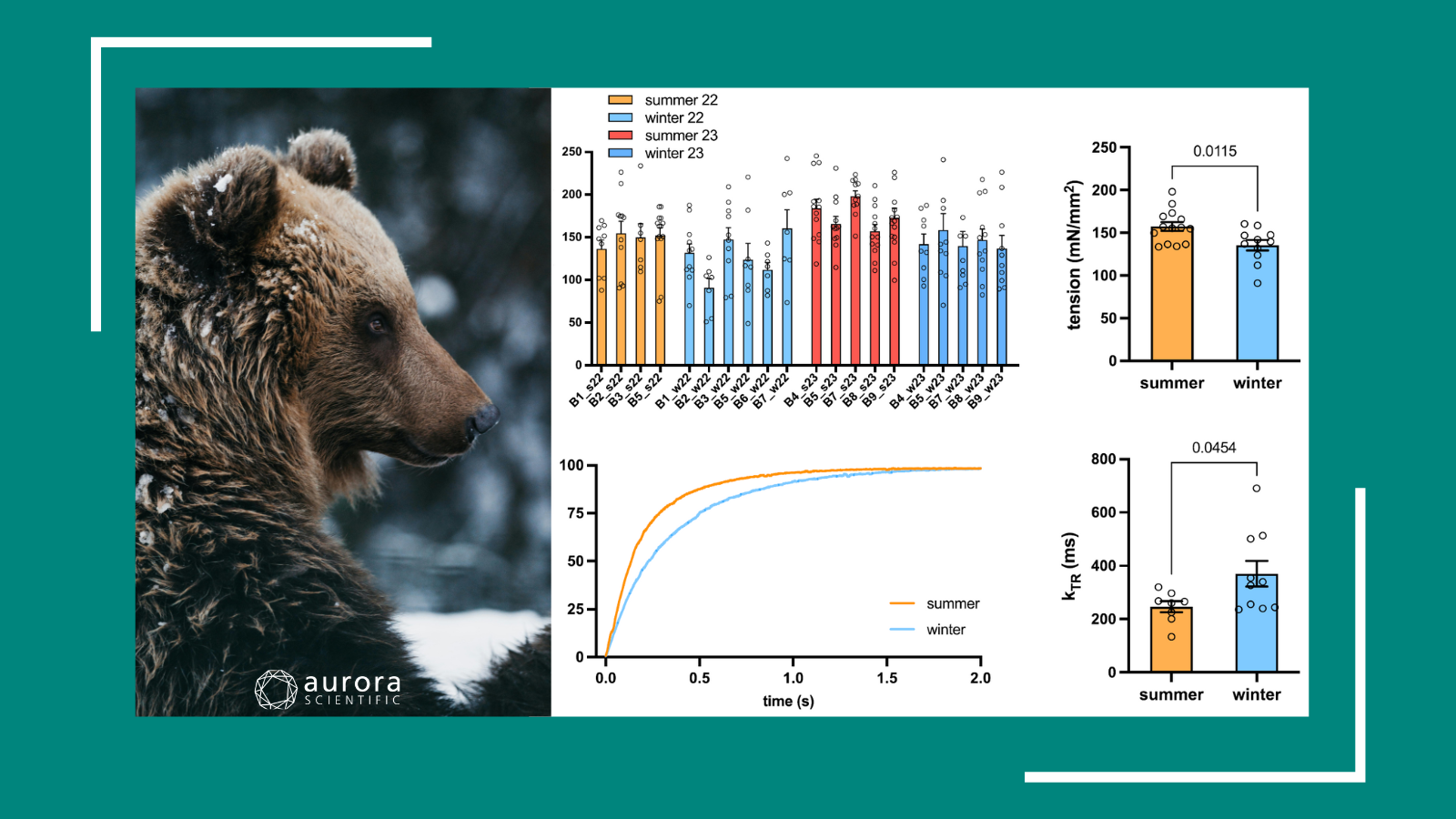Advancing Sarcopenia Research: CUHK Lab Unveils Early NMJ Deficits in Aging with Aurora Scientific’s 1200A
Recent interview with Louis Cheung, PhD and Can Cui, PhD from the CUHK Department of Orthopaedics and Traumatology about Sarcopenia and NMJ Function in ...
Building Bridges in Muscle Research: AMB’s Innovative Approach and Partnership with Aurora Scientific
Hear Dr. Anthony Hessel and Dr. Khoi Nguyen chat about Accelerated Muscle Biotechnologies beginnings, their goals for the small angle x-ray diffraction technique in research, and their future ...
tWitches, Skeletal Muscles, and Ghost Fibers
This season, we're diving into the realm of fast-tWitches, ghost fibers, and bone-chilling biochemical mysteries. From fucoidan extracts that ward off heat-induced muscle decline, to neural signals ...
Flexing New Insights in Cancer Cachexia
Cancer cachexia stands as a relentless, treatment-resistant syndrome that devastates muscle and metabolism, affecting most patients with advanced cancer and driving poor outcomes worldwide. Ahead of ...
Setup and Use of the 3-in-1 Whole Animal System
Join the Aurora Scientific team on Sept 23rd for this exclusively live virtual demo, which will provide a methodology focused overview of the 3 main experimental techniques for assessing ...
Redox Regulation of Skeletal Muscle: A Journey from Liverpool to the International Space Station
Join Dr. Anne McArdle and Dr. Malcolm Jackson as they explore groundbreaking research from the Muscle Laboratories at the University of Liverpool. They'll examine how redox regulation influences the ...
Research Highlight: Q&A with Dr. Daniel Ham
An in-depth Q&A with Dr, Daniel Ham who offers a behind-the-scenes look at his recent Nature Communications publication, including the study’s conception, execution, and implications for the ...
Fueling Function: Forthcoming Insights in Muscle Physiology
In the spirit of the American Physiology Summit, the following publication review covers forthcoming insights in muscle physiology, including smooth muscle mechanics, a neutralizing treatment for ...
Marching Forward: Recent Skeletal Muscle Discoveries
In conjunction with the Advances in Skeletal Muscle Biology conference, the following publication review digs into the impacts of protein dysfunctions, knockdowns, and modifications on skeletal ...
Murine Muscle Mechanics Workshop at York University
Hosted by Dr. Christopher Perry and Dr. Arthur Cheng in the Muscle Health Research Centre at York University, and produced in partnership with Endpoint Preclinical, our Murine Muscle Mechanics ...
New Year, New Insights: Unique Models in Muscle Physiology
Ringing in the new year is an exciting time for resolutions, recalibrations, and research. The ‘New Year, New Me’ mindset can help kickstart a period of personal growth, and recent research ...











